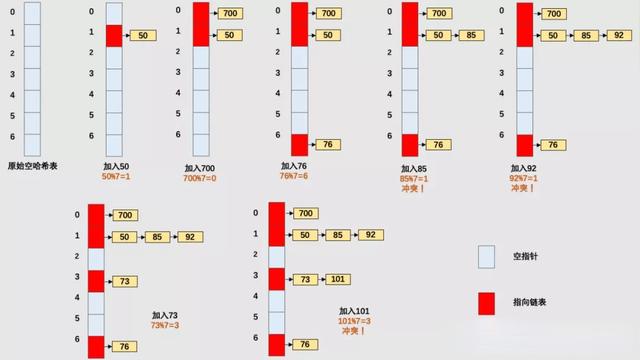对称加密与非对称加密实战
对称加密
需要对加密和解密使用相同密钥的加密算法。由于其速度快,对称性加密通常在消息发送方需要加密大量数据时使用。对称性加密也称为密钥加密。
所谓对称,就是采用这种加密方法的双方使用方式用同样的密钥进行加密和解密。密钥是控制加密及解密过程的指令。算法是一组规则,规定如何进行加密和解密。
因此加密的安全性不仅取决于加密算法本身,密钥管理的安全性更是重要。因为加密和解密都使用同一个密钥,如何把密钥安全地传递到解密者手上就成了必须要解决的问题。
DES
DES是一种对称加密算法,是一种非常简便的加密算法,但是密钥长度比较短。DES加密算法出自IBM的研究,后来被美国政府正式采用,之后开始广泛流传,但是近些年使用越来越少,因为DES使用56位密钥,以现代计算能力,24小时内即可被破解。
public class DESUtil {
private static final String KEY_ALGORITHM = "DES";
private static final String DEFAULT_CIPHER_ALGORITHM = "DES/ECB/PKCS5Padding";//默认的加密算法
/**
* DES 加密操作
*
* @param content 待加密内容
* @param key 加密密钥
* @return 返回Base64转码后的加密数据
*/
public static String encrypt(String content, String key) {
try {
Cipher cipher = Cipher.getInstance(DEFAULT_CIPHER_ALGORITHM);// 创建密码器
byte[] byteContent = content.getBytes("utf-8");
cipher.init(Cipher.ENCRYPT_MODE, getSecretKey(key));// 初始化为加密模式的密码器
byte[] result = cipher.doFinal(byteContent);// 加密
return Base64.encodeBase64String(result);//通过Base64转码返回
} catch (Exception ex) {
Logger.getLogger(DESUtil.class.getName()).log(Level.SEVERE, null, ex);
}
return null;
}
/**
* DES 解密操作
*
* @param content
* @param key
* @return
*/
public static String decrypt(String content, String key) {
try {
//实例化
Cipher cipher = Cipher.getInstance(DEFAULT_CIPHER_ALGORITHM);
//使用密钥初始化,设置为解密模式
cipher.init(Cipher.DECRYPT_MODE, getSecretKey(key));
//执行操作
byte[] result = cipher.doFinal(Base64.decodeBase64(content));
return new String(result, "utf-8");
} catch (Exception ex) {
Logger.getLogger(DESUtil.class.getName()).log(Level.SEVERE, null, ex);
}
return null;
}
/**
* 生成加密秘钥
*
* @return
*/
private static SecretKeySpec getSecretKey(final String key) {
//返回生成指定算法密钥生成器的 KeyGenerator 对象
KeyGenerator kg = null;
try {
kg = KeyGenerator.getInstance(KEY_ALGORITHM);
//DES 要求密钥长度为 56
kg.init(56, new SecureRandom(key.getBytes()));
//生成一个密钥
SecretKey secretKey = kg.generateKey();
return new SecretKeySpec(secretKey.getEncoded(), KEY_ALGORITHM);// 转换为DES专用密钥
} catch (NoSuchAlgorithmException ex) {
Logger.getLogger(DESUtil.class.getName()).log(Level.SEVERE, null, ex);
}
return null;
}
}
3DES加密
3DES是一种对称加密算法,在 DES 的基础上,使用三重数据加密算法对数据进行加密,相当于是对每个数据块应用三次 DES 加密算法。通过增加 DES 的密钥长度来避免类似的攻击,而不是设计一种全新的块密码算法这样来说,破解的概率就小了很多。缺点由于使用了三重数据加密算法,比较耗性能。
public class TripDESUtil {
private static final String KEY_ALGORITHM = "DESede";
private static final String DEFAULT_CIPHER_ALGORITHM = "DESede/ECB/PKCS5Padding";//默认的加密算法
/**
* DESede 加密操作
*
* @param content 待加密内容
* @param key 加密密钥
* @return 返回Base64转码后的加密数据
*/
public static String encrypt(String content, String key) {
try {
Cipher cipher = Cipher.getInstance(DEFAULT_CIPHER_ALGORITHM);// 创建密码器
byte[] byteContent = content.getBytes("utf-8");
cipher.init(Cipher.ENCRYPT_MODE, getSecretKey(key));// 初始化为加密模式的密码器
byte[] result = cipher.doFinal(byteContent);// 加密
return Base64.encodeBase64String(result);//通过Base64转码返回
} catch (Exception ex) {
Logger.getLogger(TripDESUtil.class.getName()).log(Level.SEVERE, null, ex);
}
return null;
}
/**
* DESede 解密操作
*
* @param content
* @param key
* @return
*/
public static String decrypt(String content, String key) {
try {
//实例化
Cipher cipher = Cipher.getInstance(DEFAULT_CIPHER_ALGORITHM);
//使用密钥初始化,设置为解密模式
cipher.init(Cipher.DECRYPT_MODE, getSecretKey(key));
//执行操作
byte[] result = cipher.doFinal(Base64.decodeBase64(content));
return new String(result, "utf-8");
} catch (Exception ex) {
Logger.getLogger(TripDESUtil.class.getName()).log(Level.SEVERE, null, ex);
}
return null;
}
/**
* 生成加密秘钥
*
* @return
*/
private static SecretKeySpec getSecretKey(final String key) {
//返回生成指定算法密钥生成器的 KeyGenerator 对象
KeyGenerator kg = null;
try {
kg = KeyGenerator.getInstance(KEY_ALGORITHM);
//DESede
kg.init(new SecureRandom(key.getBytes()));
//生成一个密钥
SecretKey secretKey = kg.generateKey();
return new SecretKeySpec(secretKey.getEncoded(), KEY_ALGORITHM);// 转换为DESede专用密钥
} catch (NoSuchAlgorithmException ex) {
Logger.getLogger(TripDESUtil.class.getName()).log(Level.SEVERE, null, ex);
}
return null;
}
}
AES加密
密码学中的高级加密标准(Advanced Encryption Standard,AES),又称Rijndael加密法,是美国联邦政府采用的一种区块加密标准。
public class AESUtil {
private static final String KEY_ALGORITHM = "AES";
private static final String DEFAULT_CIPHER_ALGORITHM = "AES/ECB/PKCS5Padding";//默认的加密算法
/**
* AES 加密操作
*
* @param content 待加密内容
* @param key 加密密钥
* @return 返回Base64转码后的加密数据
*/
public static String encrypt(String content, String key) {
try {
Cipher cipher = Cipher.getInstance(DEFAULT_CIPHER_ALGORITHM);// 创建密码器
byte[] byteContent = content.getBytes("utf-8");
cipher.init(Cipher.ENCRYPT_MODE, getSecretKey(key));// 初始化为加密模式的密码器
byte[] result = cipher.doFinal(byteContent);// 加密
return Base64.encodeBase64String(result);//通过Base64转码返回
} catch (Exception ex) {
Logger.getLogger(AESUtil.class.getName()).log(Level.SEVERE, null, ex);
}
return null;
}
/**
* AES 解密操作
*
* @param content
* @param key
* @return
*/
public static String decrypt(String content, String key) {
try {
//实例化
Cipher cipher = Cipher.getInstance(DEFAULT_CIPHER_ALGORITHM);
//使用密钥初始化,设置为解密模式
cipher.init(Cipher.DECRYPT_MODE, getSecretKey(key));
//执行操作
byte[] result = cipher.doFinal(Base64.decodeBase64(content));
return new String(result, "utf-8");
} catch (Exception ex) {
Logger.getLogger(AESUtil.class.getName()).log(Level.SEVERE, null, ex);
}
return null;
}
/**
* 生成加密秘钥
*
* @return
*/
private static SecretKeySpec getSecretKey(final String key) {
//返回生成指定算法密钥生成器的 KeyGenerator 对象
KeyGenerator kg = null;
try {
kg = KeyGenerator.getInstance(KEY_ALGORITHM);
//AES 要求密钥长度为 128
kg.init(128, new SecureRandom(key.getBytes()));
//生成一个密钥
SecretKey secretKey = kg.generateKey();
return new SecretKeySpec(secretKey.getEncoded(), KEY_ALGORITHM);// 转换为AES专用密钥
} catch (NoSuchAlgorithmException ex) {
Logger.getLogger(AESUtil.class.getName()).log(Level.SEVERE, null, ex);
}
return null;
}
}
非对称加密
非对称加密算法需要两个密钥:公开密钥(publickey:简称公钥)和私有密钥(privatekey:简称私钥)。
公钥与私钥是一对,如果用公钥对数据进行加密,只有用对应的私钥才能解密。
因为加密和解密使用的是两个不同的密钥,所以这种算法叫作非对称加密算法。
非对称加密算法实现机密信息交换的基本过程是:甲方生成一对密钥并将公钥公开,需要向甲方发送信息的其他角色(乙方)使用该密钥(甲方的公钥)对机密信息进行加密后再发送给甲方;甲方再用自己私钥对加密后的信息进行解密。甲方想要回复乙方时正好相反,使用乙方的公钥对数据进行加密,同理,乙方使用自己的私钥来进行解密。
算法强度复杂、安全性依赖于算法与密钥但是由于其算法复杂,而使得加密解密速度没有对称加密解密的速度快。对称密码体制中只有一种密钥,并且是非公开的,如果要解密就得让对方知道密钥。所以保证其安全性就是保证密钥的安全,而非对称密钥体制有两种密钥,其中一个是公开的,这样就可以不需要像对称密码那样传输对方的密钥了。这样安全性就大了很多。
RSA加密
RSA是一种非对称加密算法.RSA有两个密钥,一个是公开的,称为公开密钥;一个是私密的,称为私密密钥。公开密钥是对大众公开的,私密密钥是服务器私有的,两者不能互推得出。用公开密钥对数据进行加密,私密密钥可解密;私密密钥对数据加密,公开密钥可解密。速度较对称加密慢。
public class RSAUtils {
/**
* 加密算法RSA
*/
public static final String KEY_ALGORITHM = "RSA";
/**
* 签名算法
*/
public static final String SIGNATURE_ALGORITHM = "MD5withRSA";
/**
* 获取公钥的key
*/
private static final String PUBLIC_KEY = "RSAPublicKey";
/**
* 获取私钥的key
*/
private static final String PRIVATE_KEY = "RSAPrivateKey";
/**
* RSA最大加密明文大小
*/
private static final int MAX_ENCRYPT_BLOCK = 117;
/**
* RSA最大解密密文大小
*/
private static final int MAX_DECRYPT_BLOCK = 128;
/**
* <p>
* 生成密钥对(公钥和私钥)
* </p>
*
* @return
* @throws Exception
*/
public static Map<String, Object> genKeyPair() throws Exception {
KeyPairGenerator keyPairGen = KeyPairGenerator.getInstance(KEY_ALGORITHM);
keyPairGen.initialize(1024);
KeyPair keyPair = keyPairGen.generateKeyPair();
RSAPublicKey publicKey = (RSAPublicKey) keyPair.getPublic();
RSAPrivateKey privateKey = (RSAPrivateKey) keyPair.getPrivate();
Map<String, Object> keyMap = new HashMap<String, Object>(2);
keyMap.put(PUBLIC_KEY, publicKey);
keyMap.put(PRIVATE_KEY, privateKey);
return keyMap;
}
/**
* <p>
* 用私钥对信息生成数字签名
* </p>
*
* @param data 已加密数据
* @param privateKey 私钥(BASE64编码)
*
* @return
* @throws Exception
*/
public static String sign(byte[] data, String privateKey) throws Exception {
byte[] keyBytes = decode(privateKey);
PKCS8EncodedKeySpec pkcs8KeySpec = new PKCS8EncodedKeySpec(keyBytes);
KeyFactory keyFactory = KeyFactory.getInstance(KEY_ALGORITHM);
PrivateKey privateK = keyFactory.generatePrivate(pkcs8KeySpec);
Signature signature = Signature.getInstance(SIGNATURE_ALGORITHM);
signature.initSign(privateK);
signature.update(data);
return encode(signature.sign());
}
/**
* <p>
* 校验数字签名
* </p>
*
* @param data 已加密数据
* @param publicKey 公钥(BASE64编码)
* @param sign 数字签名
*
* @return
* @throws Exception
*
*/
public static boolean verify(byte[] data, String publicKey, String sign)
throws Exception {
byte[] keyBytes = decode(publicKey);
X509EncodedKeySpec keySpec = new X509EncodedKeySpec(keyBytes);
KeyFactory keyFactory = KeyFactory.getInstance(KEY_ALGORITHM);
PublicKey publicK = keyFactory.generatePublic(keySpec);
Signature signature = Signature.getInstance(SIGNATURE_ALGORITHM);
signature.initVerify(publicK);
signature.update(data);
return signature.verify(decode(sign));
}
/**
* <P>
* 私钥解密
* </p>
*
* @param encryptedData 已加密数据
* @param privateKey 私钥(BASE64编码)
* @return
* @throws Exception
*/
public static byte[] decryptByPrivateKey(byte[] encryptedData, String privateKey)
throws Exception {
byte[] keyBytes = decode(privateKey);
PKCS8EncodedKeySpec pkcs8KeySpec = new PKCS8EncodedKeySpec(keyBytes);
KeyFactory keyFactory = KeyFactory.getInstance(KEY_ALGORITHM);
Key privateK = keyFactory.generatePrivate(pkcs8KeySpec);
Cipher cipher = Cipher.getInstance(keyFactory.getAlgorithm());
cipher.init(Cipher.DECRYPT_MODE, privateK);
int inputLen = encryptedData.length;
ByteArrayOutputStream out = new ByteArrayOutputStream();
int offSet = 0;
byte[] cache;
int i = 0;
// 对数据分段解密
while (inputLen - offSet > 0) {
if (inputLen - offSet > MAX_DECRYPT_BLOCK) {
cache = cipher.doFinal(encryptedData, offSet, MAX_DECRYPT_BLOCK);
} else {
cache = cipher.doFinal(encryptedData, offSet, inputLen - offSet);
}
out.write(cache, 0, cache.length);
i++;
offSet = i * MAX_DECRYPT_BLOCK;
}
byte[] decryptedData = out.toByteArray();
out.close();
return decryptedData;
}
/**
* <p>
* 公钥解密
* </p>
*
* @param encryptedData 已加密数据
* @param publicKey 公钥(BASE64编码)
* @return
* @throws Exception
*/
public static byte[] decryptByPublicKey(byte[] encryptedData, String publicKey)
throws Exception {
byte[] keyBytes = decode(publicKey);
X509EncodedKeySpec x509KeySpec = new X509EncodedKeySpec(keyBytes);
KeyFactory keyFactory = KeyFactory.getInstance(KEY_ALGORITHM);
Key publicK = keyFactory.generatePublic(x509KeySpec);
Cipher cipher = Cipher.getInstance(keyFactory.getAlgorithm());
cipher.init(Cipher.DECRYPT_MODE, publicK);
int inputLen = encryptedData.length;
ByteArrayOutputStream out = new ByteArrayOutputStream();
int offSet = 0;
byte[] cache;
int i = 0;
// 对数据分段解密
while (inputLen - offSet > 0) {
if (inputLen - offSet > MAX_DECRYPT_BLOCK) {
cache = cipher.doFinal(encryptedData, offSet, MAX_DECRYPT_BLOCK);
} else {
cache = cipher.doFinal(encryptedData, offSet, inputLen - offSet);
}
out.write(cache, 0, cache.length);
i++;
offSet = i * MAX_DECRYPT_BLOCK;
}
byte[] decryptedData = out.toByteArray();
out.close();
return decryptedData;
}
/**
* <p>
* 公钥加密
* </p>
*
* @param data 源数据
* @param publicKey 公钥(BASE64编码)
* @return
* @throws Exception
*/
public static byte[] encryptByPublicKey(byte[] data, String publicKey)
throws Exception {
byte[] keyBytes = decode(publicKey);
X509EncodedKeySpec x509KeySpec = new X509EncodedKeySpec(keyBytes);
KeyFactory keyFactory = KeyFactory.getInstance(KEY_ALGORITHM);
Key publicK = keyFactory.generatePublic(x509KeySpec);
// 对数据加密
Cipher cipher = Cipher.getInstance(keyFactory.getAlgorithm());
cipher.init(Cipher.ENCRYPT_MODE, publicK);
int inputLen = data.length;
ByteArrayOutputStream out = new ByteArrayOutputStream();
int offSet = 0;
byte[] cache;
int i = 0;
// 对数据分段加密
while (inputLen - offSet > 0) {
if (inputLen - offSet > MAX_ENCRYPT_BLOCK) {
cache = cipher.doFinal(data, offSet, MAX_ENCRYPT_BLOCK);
} else {
cache = cipher.doFinal(data, offSet, inputLen - offSet);
}
out.write(cache, 0, cache.length);
i++;
offSet = i * MAX_ENCRYPT_BLOCK;
}
byte[] encryptedData = out.toByteArray();
out.close();
return encryptedData;
}
/**
* <p>
* 私钥加密
* </p>
*
* @param data 源数据
* @param privateKey 私钥(BASE64编码)
* @return
* @throws Exception
*/
public static byte[] encryptByPrivateKey(byte[] data, String privateKey)
throws Exception {
byte[] keyBytes = decode(privateKey);
PKCS8EncodedKeySpec pkcs8KeySpec = new PKCS8EncodedKeySpec(keyBytes);
KeyFactory keyFactory = KeyFactory.getInstance(KEY_ALGORITHM);
Key privateK = keyFactory.generatePrivate(pkcs8KeySpec);
Cipher cipher = Cipher.getInstance(keyFactory.getAlgorithm());
cipher.init(Cipher.ENCRYPT_MODE, privateK);
int inputLen = data.length;
ByteArrayOutputStream out = new ByteArrayOutputStream();
int offSet = 0;
byte[] cache;
int i = 0;
// 对数据分段加密
while (inputLen - offSet > 0) {
if (inputLen - offSet > MAX_ENCRYPT_BLOCK) {
cache = cipher.doFinal(data, offSet, MAX_ENCRYPT_BLOCK);
} else {
cache = cipher.doFinal(data, offSet, inputLen - offSet);
}
out.write(cache, 0, cache.length);
i++;
offSet = i * MAX_ENCRYPT_BLOCK;
}
byte[] encryptedData = out.toByteArray();
out.close();
return encryptedData;
}
/**
* <p>
* 获取私钥
* </p>
*
* @param keyMap 密钥对
* @return
* @throws Exception
*/
public static String getPrivateKey(Map<String, Object> keyMap)
throws Exception {
Key key = (Key) keyMap.get(PRIVATE_KEY);
return encode(key.getEncoded());
}
/**
* <p>
* 获取公钥
* </p>
*
* @param keyMap 密钥对
* @return
* @throws Exception
*/
public static String getPublicKey(Map<String, Object> keyMap)
throws Exception {
Key key = (Key) keyMap.get(PUBLIC_KEY);
return encode(key.getEncoded());
}
public static byte[] decode(String base64) throws Exception {
return Base64.decode(base64.getBytes());
}
/**
* <p>
* 二进制数据编码为BASE64字符串
* </p>
*
* @param bytes
* @return
* @throws Exception
*/
public static String encode(byte[] bytes) throws Exception {
return new String(Base64.encode(bytes));
}
}






















